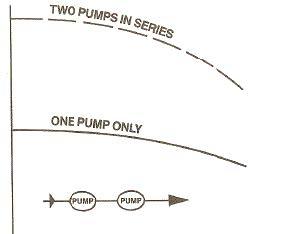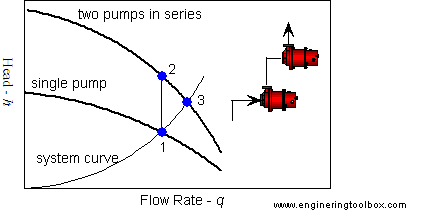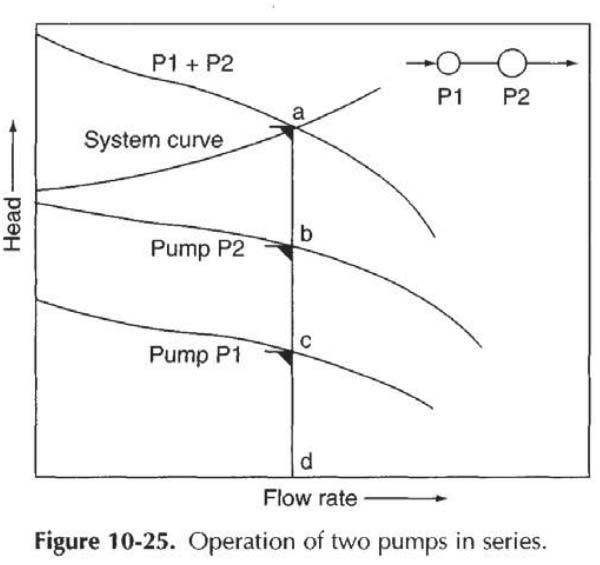I have two theoretical questions:
1) What would hapen if an existing water line is flowing (say 5,000 gpm), and I place a centrifugal pump in the line with a pump curve that does not dexceed 1,000 gpm?
2) Can someone enlighten me why when you place two pumps in series, the outlet TDH and pressure is doubled but the flow rate is not? I cannot see how the equation works since if you increase the pressure, shouldn't flow rate also increase since nothing else changes in the piping system?
Thanks.
1) What would hapen if an existing water line is flowing (say 5,000 gpm), and I place a centrifugal pump in the line with a pump curve that does not dexceed 1,000 gpm?
2) Can someone enlighten me why when you place two pumps in series, the outlet TDH and pressure is doubled but the flow rate is not? I cannot see how the equation works since if you increase the pressure, shouldn't flow rate also increase since nothing else changes in the piping system?
Thanks.



